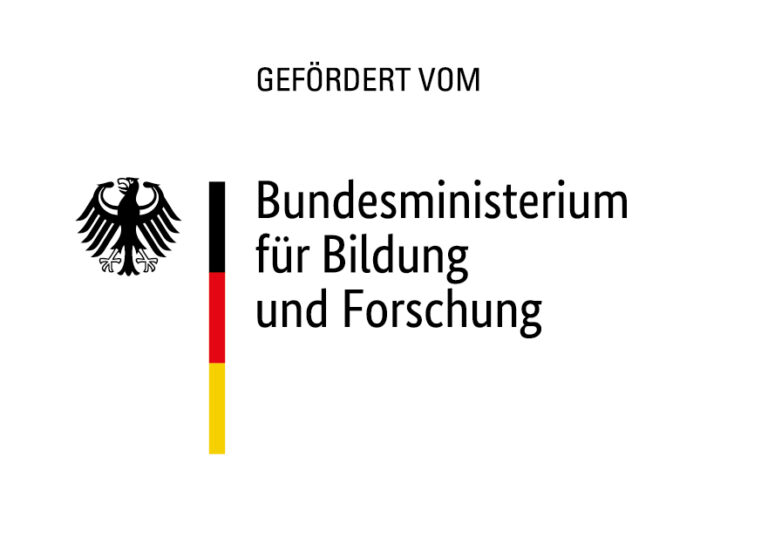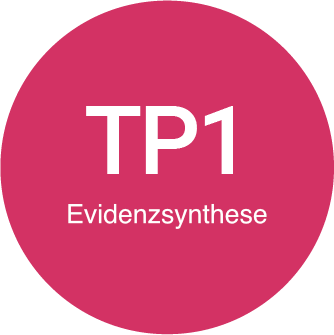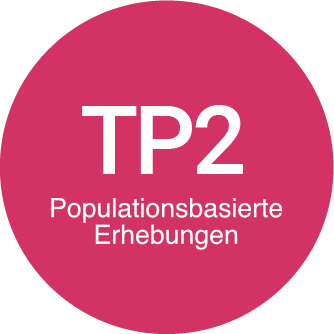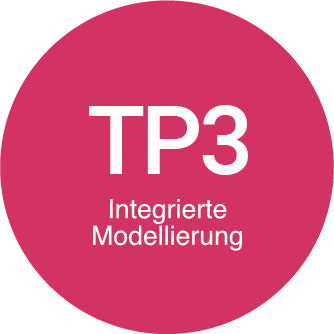Project overview
Development of an integrated model for simulation
the transmission of various respiratory infections
Destination
The medium- and long-term effects of nonpharmaceutical interventions (NPIs) used during the COVID-19 pandemic on respiratory infections such as respiratory syncytial virus, influenza, and pneumococcal disease remain poorly understood. However, they play a critical role in assessing the total burden of disease according to NPIs.
Our goal is to develop an integrated model to simulate the transmission of various respiratory infections and the collateral effects of NPIs on their medium- and long-term disease burden.
Specific goals are:
- Collection, synthesis, and analysis of available data on immune markers, infection prevalence, and disease burden of respiratory infections during and after NPIs (SP 1).
- Generate modelable data by sampling from existing population-based studies in adults and children to understand acquired immunity and the dynamics of RSV, influenza, and pneumococcal disease following NPIs over the period 2022-2024 (SP 2).
- Build an integrated model that can provide simulations for heterogeneous scenarios related to the epidemiology and public health burden of respiratory infections during and after NPIs in pandemic situations to inform decision makers (SP 3).
- Integrate and build various forecasting models to predict case rates and hospitalizations for RSV, pneumococcal, and influenza in the short term to generate information on existing and projected health system capacity (SP 4).
Subprojects
TP1
Evidence Synthesis
In this subproject, we first aim to assemble a global dataset on the impact of NPIs on the incidence and disease burden of respiratory syncytial virus, influenza, and pneumococcus to support parameterization in subprojects 3 and 4. Second, we aim to use mixed-effects modeling to understand the effects of NPI type, duration and timing of implementation, intensity, target population, stringency of implementation, and environmental factors of NPI and its potentially heterogeneous effects on respiratory pathogens.
Both are important to better understand the side effects of non-pharmaceutical interventions for future pandemics, but also to know what will happen interpandemically.
Objective: to understand the impact of different NPIs and the various aspects (e.g., duration, target population, seasonality) that might influence their impact on the disease dynamics of RSV, influenza, and pneumococcal disease.
Hypothesis: The effects of NPIs vary by respiratory agent and other factors (including the effects of type and nature of NPI, duration and timing of implementation, intensity, target population, stringency of implementation, and environmental factors).
To that end, we will strive for the following:
- Clean, merge, and synthesize global data from the medical literature and publicly available datasets from multiple sources on the impact of different forms, strengths, and types of NPIs on the incidence and burden of disease of respiratory syncytial virus, influenza, and pneumococcal disease.
- Provide data for TP3 in a format that allows parameterization of the integrated model from the evidence synthesis and meta-analyses performed.
- Assessment of heterogeneity in disease dynamics of RSV, influenza, and pneumococcus during and after use of NPIs.
PI: PD Dr. Claudia Denkinger, Heidelberg University Hospital
Partner:inside:
Dr. Berit Lange, Helmholtz Centre for Infection Research Prof. Dr. Andre Karch, University of Münster
Dr. Veronika Jäger, University of Münster
Dr. Roland Kaiser, University of Cologne
PD Dr. Ole Wichmann, RKI
Prof. Dr. Rafael Mikolajczyk, University of Halle
Dr. Cornelia Gottschick, University of Halle
TP2
Population-based surveys
Survey the dynamics of RSV, influenza, and pneumococcal disease in a population-based cohort intra- and postpandemic
In this subproject, we provide information for integrated postpandemic models of respiratory infections by measuring the dynamics of RSV, influenza, SARS-CoV-2, and pneumococcal immunity, contact patterns, and adherence to NPIs in a well-characterized German population cohort (MuSPAD) of adults and children.
This is important because the evidence, which comes mainly from the first and second years of the pandemic, will not be able to explain changes in immunity or contact behavior at a later date (2022-2024). Because NPIs are unprecedented in duration, severity, and scope compared to previous epidemics or pandemics, relevant data can only be assessed in real time over the next several years.
We will therefore first examine 1600 random samples of adult participants from the existing population-based Germany-wide seroprevalence study MusPAD and additionally examine samples from 200 participants in whose household children were born between 2020-2021. Participants will be invited, again in fall/winter 2022, summer 2023, and summer 2024, and then the differences in antibody response in adults and children will be analyzed using a well-established multiplex serology assay.
At the same time, we will measure contact patterns and NPI adherence by adapting an established contact survey (COVIMOD) and using previously collected and newly provided information on participants from MuSPAD. The results will be used to assess the impact of contact behavior and individual NPI-related variation on changing infection dynamics for RSV, influenza, SARS-CoV-2, and pneumococcal disease in adults and children in postpandemic Germany. Information on both post-pandemic contact matrices and respiratory infection dynamics as a function of individual NPI adherence will be provided in a format that allows parameterization of integrated models of respiratory infection.
Hypothesis: infection dynamics of RSV, influenza, and pneumococcal disease in adults and children are differentially influenced depending on individual adherence to NPIs and specific contact patterns.
Target: In this subproject, we aim to provide missing information for integrated postpandemic models of respiratory infection by examining the dynamics of RSV, influenza, SARS-CoV-2, and pneumococcal immunity, contact patterns, and NPI adherence in an existing and well-characterized German population-based cohort of adults and an additional cohort of children in 2022 to 2024.
Specific goals are
- To survey the change in RSV, SARS-CoV-2, influenza, and pneumococcal infections/re-infections in different age groups post- and inter-pandemic in a population-based cohort in Germany between 2022 and 2024 using multiplex serology.
- Estimation of post-pandemic contact patterns and estimation of individual NPI-related adherence during the same period.
- Analysis of the influence of individual NPI-related variations and contact behavior on changes in infection dynamics.
PI: Dr. Berit Lange, MSc
Partner:inside:
Dr. Nicole Schneiderhan-Marra, NMI
Prof. Dr. Andre Karch, University of Münster
Dr. Veronika Jäger, University of Münster
TP3
Integrated modeling
Modeling the spread of multiple pathogens in realistic environments to quantify the impact of specific interventions in the endemic equilibrium.
Airborne respiratory diseases are among the most prevalent diseases in modern society. In addition to common flu, other emerging and seasonal respiratory infections can pose a significant burden to certain segments of the population. Examples include SARS-CoV-2 and influenza, which have relatively high rates of severe illness and death in the elderly, and respiratory syncytial virus (RSV), which is a leading cause of hospitalization in children during the first two years of life. In Germany, the incidence of seasonal endemic respiratory infections typically fluctuates every two years, and epidemiologists, clinicians, and policy makers can prepare for the big waves. However, when new respiratory diseases emerge, the endemic balance of seasonal diseases is disrupted, especially when population-level interventions affect natural infection cycles.
The NPIs introduced against COVID-19, for example, are expected to lead to out-of-season occurrence and an increase in the size and severity of RSV and influenza waves. Changes in the epidemiology of typical respiratory infections may affect the planning, implementation, and effectiveness of public health interventions currently used in clinical practice. Infectious disease modeling is the only method to address this complexity and to study the impact of NPIs on the epidemiology of other infections.
This project aims to advance modeling capabilities in the area of co-occurring respiratory diseases and provide a comprehensive framework for policy makers to assess the impact of NPIs to control one disease on the endemic balance of other diseases.
The main objective of this subproject is to provide a modeling framework to help policy makers plan NPIs considering the impact on multiple infections prevalent in the population. This framework will balance the benefits of measures to contain the spread of a particular disease with the impact those measures might have on the medium- and long-term dynamics of other diseases, particularly seasonal and reemerging diseases. To this end, we plan to address the following research questions:
- What conditions determine the impact of seasonal influenza, pneumonia, RSV, and COVID-19? In this step, we will consider the dynamics of infections separately.
- What are the realistic implications of coinfection/competition between included infections? Are they negligible?
- How does the detailed household/school/community contextual contact structure affect the spread of each disease and the impact of NPIs? How can these microscopic network effects be incorporated into a compartmentalized mean-field model?
- How do different NPIs designed to contain the spread of a single infection affect the dynamics of others?
Thus, our specific objectives in answering these research questions are as follows:
- Implementation of single pathogen models and analysis of the sensitivity of their parameters.
- Incorporating empirical evidence of competitive co-infection between single pathogens into the formulation of a compartmental multi-pathogen model with differential equations.
- Derive a method for incorporating an equivalent function for microscopic network properties into a mean-field model for various NPI-induced network configurations.
- To apply NPIs in a multiple pathogen model acting on a single disease or as a population-level containment strategy, and to develop a comprehensive basis for evaluating the cost-effectiveness of NPIs in a multiple pathogen framework.
Dr. Viola Priesemann, PI
PD Dr. Ole Wichmann, Co-I
Prof. Alexander Kuhlman, Co-I
Prof. Tyll Krüger, Co-I
Dr. Wolfgang Bock, Co-I
TP4
Short-term forecasts
Nowcasting and short-term prediction of multiple respiratory diseases in real time
Short-term forecasts provide an important complementary perspective to scenario modeling. They contribute to situational awareness, i.e., the timely and reliable assessment of the current intensity and trend of an epidemic. In this way, they support decision-making about interventions and the use of resources. Because many epidemiological indicators are available only with a time lag due to reporting delays, a thorough assessment of the current situation also requires a correction of the most recent data, a task known as nowcasting, which is conceptually closely related to short-term forecasting. This subproject will expand existing infrastructures to provide an operational nowcasting and short-term forecasting system for respiratory syncytial virus (RSV), pneumococcal, seasonal influenza, and COVID-19.
Both case numbers and the resulting burden on the health care system are considered. Particular emphasis is placed on age-stratified analyses and appropriate quantification of forecast uncertainty. Building on our previous work, we will take a collaborative multi-model approach combining nowcasts and forecasts from different models. Such combined ensemble forecasts have proven to be more robust than single-model forecasts in many situations and facilitate communication with decision makers. All results are made available to the public in real time following an established open science concept. This approach also provides the framework for model evaluation and validation. Predictive performance will be assessed using modern evaluation methods in a prospective and pre-registered evaluation study.
Particular attention will be paid to which modeling strategies are most promising at which time horizons, the advantages of stratified forecasting or nowcasting, and how best to combine different forecasts into an ensemble. While a basic set of models will be contributed by the leadership team at the Karlsruhe Institute of Technology as well as by four partner groups within the work package (see section Analysis Methods), the platform will also be open for contributions from external groups as in previous projects.
The goal of this subproject is to extend existing structures for collaborative short-term forecasting of COVID-19 (the German-Polish COVID-19 Forecast Hub, https://kitmetricslab.github.io/forecasthub) to various respiratory pathogens (respiratory syncytial virus, pneumococcus, seasonal influenza). The current platform, shown in Figure 4.1, includes predictions of COVID-19 cases and deaths based on a number of different models.
The proposed project will add additional indicators on the above diseases, including the resulting burden on the health care system, as well as age-stratified outcomes. In this expanded framework, it will also be necessary to include a nowcast component. By nowcasts, we mean the statistical correction of the most recent data points in a time series of epidemiologic indicators that are incomplete due to reporting delays and usually underestimate the true burden. Figure 4.2 illustrates the relationship between nowcasts and near-term forecasts, as addressed here, and longer-term scenarios, as addressed in SP3.
The platform will include nowcasts, short-term forecasts, and associated uncertainties, from both mechanistic models based on the findings of subprojects 1 and 2 and purely data-driven statistical approaches. The main output will be a combined ensemble prediction, which is expected to have better stability compared to single model predictions and thus provide better guidance, especially to decision makers. The generated probabilistic predictions are subjected to continuous evaluation using modern statistical methods. In this way, our subproject will provide a useful feedback mechanism for model development. The main research questions are as follows:
- How reliable are the generated nowcasts, and up to what time horizons are reliable predictions possible for the various pathogens and targets? Are there advantages of integrating epidemiologic information as generated in TPs 1 and 2 compared with purely data-driven approaches?
- How can the quantile predictions of the individual models be improved by prediction combination/ensemble approaches?
- Are reliable predictions by age group possible, and can stratified models improve overall predictions? How can stratified predictions be effectively visualized / communicated?
In all these issues, special attention is paid to the appropriate quantification of forecast uncertainty in terms of probabilistic forecasts. We will also involve relevant expertise from the public health field to ensure that the predictions made are actually of practical use. Dr. Johannes Dreesmann, Head of Department at the Lower Saxony State Health Office, has agreed to be available as a contact person.
Dr. Johannes Bracher
Prof. Dr. Melanie Schienle, KIT Karlsruhe





